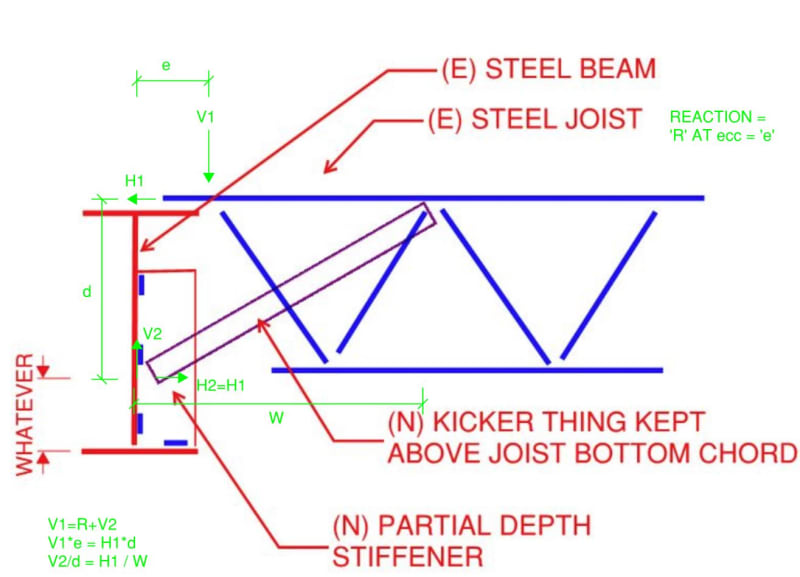jochav52802
Structural
- Nov 28, 2018
- 81
Good Morning,
Per AISC's Design Guide-9, I've determined that an I-Beam installed in the field can't handle a torsional load that results fromm the supported joists being installed eccentrically by the contractor.
That said, I need to determine if adding a Cap-Channel to the bottom flange will be enough to provide the required torsional resistance.
I found a CISC guide that shows me how to calculate J and Cw, but it doesn't tell me how to calculate Wns, which is the "normalized warping function." I'd appreciate if someone could help guide me towards a solution.
Many thanks in advance!
Best regards,
jochav52802
Per AISC's Design Guide-9, I've determined that an I-Beam installed in the field can't handle a torsional load that results fromm the supported joists being installed eccentrically by the contractor.
That said, I need to determine if adding a Cap-Channel to the bottom flange will be enough to provide the required torsional resistance.
I found a CISC guide that shows me how to calculate J and Cw, but it doesn't tell me how to calculate Wns, which is the "normalized warping function." I'd appreciate if someone could help guide me towards a solution.
Many thanks in advance!
Best regards,
jochav52802



